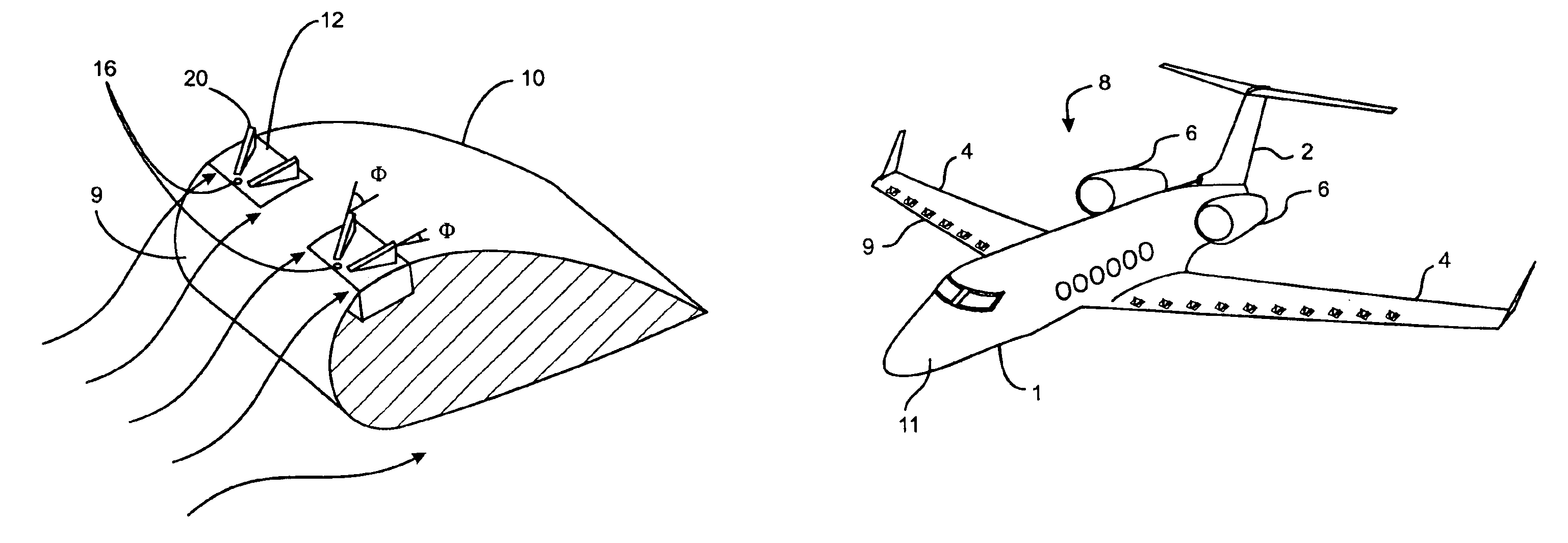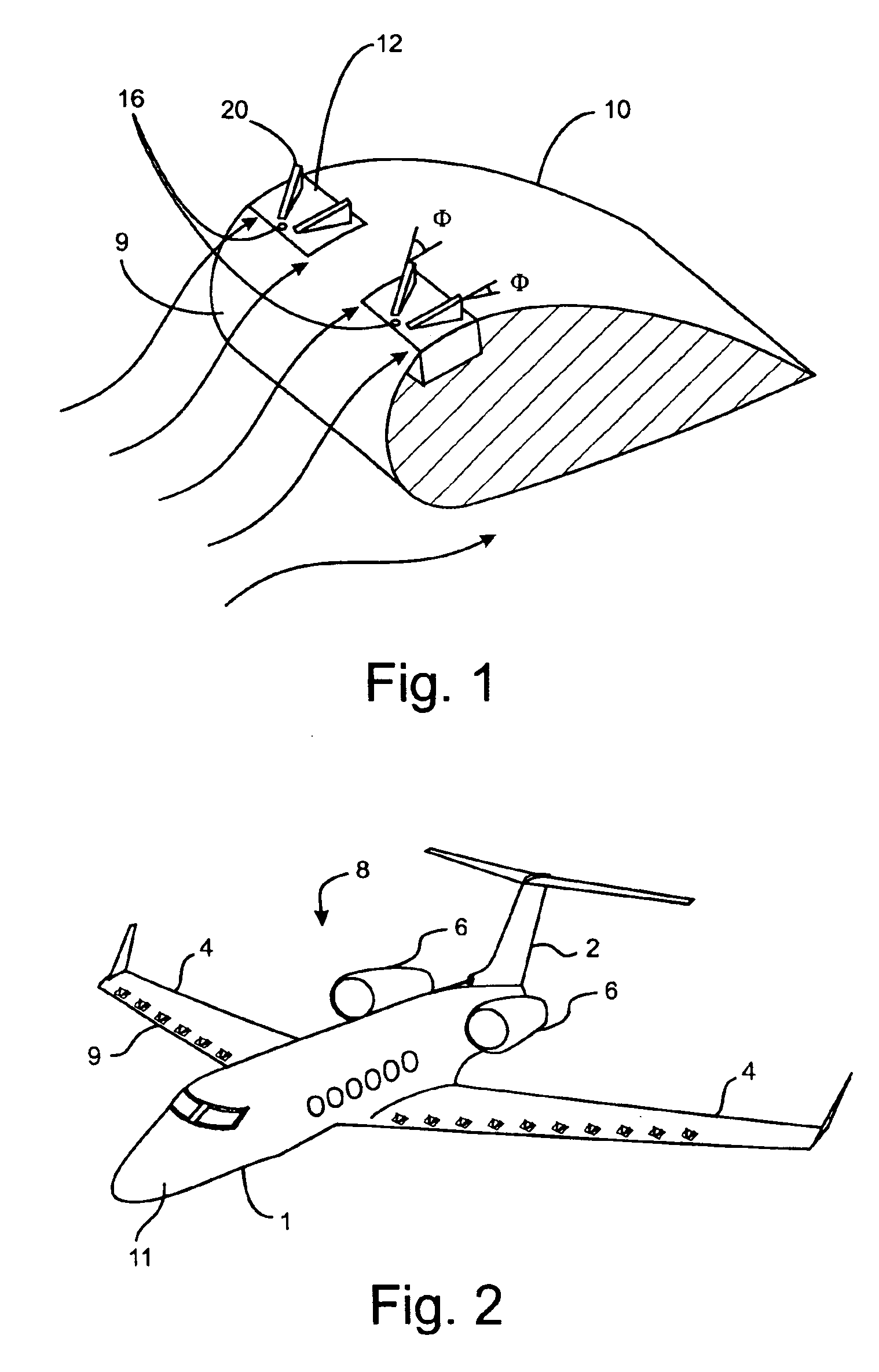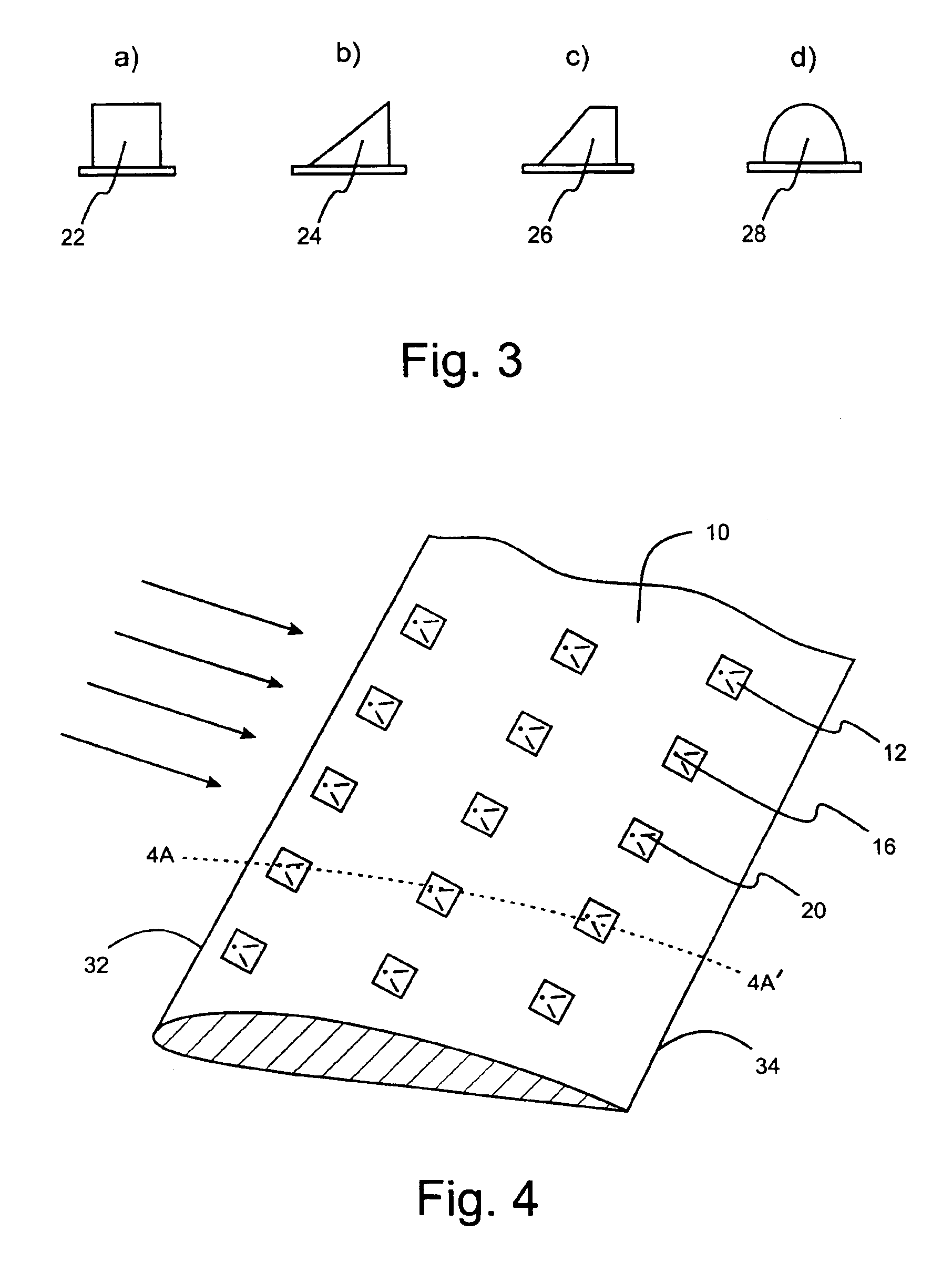Flow control device and method of controlling flow
- Summary
- Abstract
- Description
- Claims
- Application Information
AI Technical Summary
Benefits of technology
Problems solved by technology
Method used
Image
Examples
second embodiment
a method to identify the shift in measured power spectrum of the signal from the pressure transducer to identify stall utilizes a recursively identified system model, particularly an Auto-Regressive Moving Average (ARMA) model. An example of this type of model is used in Orbital Research Inc's patented predictive adaptive controller referenced herein. The ARMA recursive identification method attempts to fit specific models to the measured pressure data. Evaluation of this data reveals distinct, identifiable model order shifts based upon attached and separated airflow over the airfoil, which can be used to set the deployment of the flow effectors for the control of fluid flow. Further analysis of the frequency spectrum of the data reveals recognizable oscillations in the pressure distribution over the airfoil. This clear characterization alongside the model order shifts allows the ORICA identifier to classify discrete models based upon each flow condition, thus allowing precise contr...
third embodiment
a method for quantifying the power spectrum measured by the pressure transducer is by using Short-Time Fourier Transforms (STFT). A Discrete Fourier transform (DFT), and its numerically efficient complement the Fast Fourier Transform (FFT), both provide frequency information of a digitized signal, such as the pressure measurement recorded by the pressure transducer on the surface of the airfoil. The DFT and FFT both assume that the signal that is being measured is stationary in time. However, in the case of the airfoil and other typical aerodynamic models, the measured pressure signal is not stationary in time, which means a typical DFT / FFT approach is inapplicable. However, for short time periods the signal maybe considered to be stationary. Therefore, it is possible to estimate the mean power spectrum by segmenting the pressure data into epochs lasting anywhere from 0.1-5 seconds each, and then applying a discrete-time Fourier transform (DFT) to the windowed data. The DFT is used ...
PUM
 Login to View More
Login to View More Abstract
Description
Claims
Application Information
 Login to View More
Login to View More - R&D
- Intellectual Property
- Life Sciences
- Materials
- Tech Scout
- Unparalleled Data Quality
- Higher Quality Content
- 60% Fewer Hallucinations
Browse by: Latest US Patents, China's latest patents, Technical Efficacy Thesaurus, Application Domain, Technology Topic, Popular Technical Reports.
© 2025 PatSnap. All rights reserved.Legal|Privacy policy|Modern Slavery Act Transparency Statement|Sitemap|About US| Contact US: help@patsnap.com



